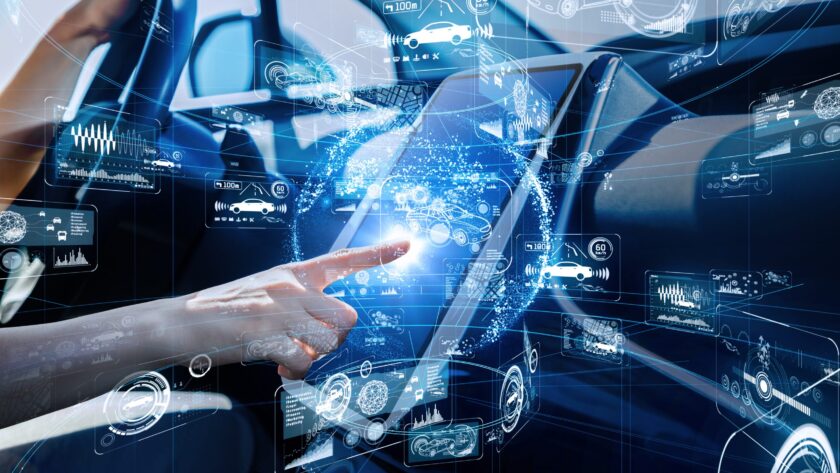In the 21st century, technology is no longer just a luxury but a fundamental driver of progress across the globe. From the way we communicate to how we access healthcare, education, and economic opportunities, technology has revolutionized nearly every aspect of human life. As we confront pressing global challenges like poverty, inequality, environmental degradation, and rapid population growth, technology holds the potential to be a key enabler in driving human development. However, the role of technology goes beyond simply addressing these challenges; it also offers opportunities to innovate, create new solutions, and unlock paths to a brighter, more sustainable future.
In this article, we explore how technology is driving development, the innovations that are shaping the future, and how we can harness these innovations to create lasting, positive change for individuals and communities worldwide.
1. The Role of Technology in Human Development
Human development encompasses economic growth, education, healthcare, and well-being. Technology plays a pivotal role in shaping each of these elements, offering new tools, platforms, and resources to address both traditional and emerging challenges.
1.1 Economic Growth and Technological Innovation
One of the most profound impacts of technology is its ability to accelerate economic growth. By enhancing productivity, improving efficiency, and creating new markets, technological innovation is fueling the growth of industries and economies worldwide. Digital technologies, in particular, have lowered barriers to entry for businesses and entrepreneurs, enabling the creation of new economic opportunities.
Examples:
- E-commerce: Platforms like Amazon, Alibaba, and Etsy have revolutionized trade, allowing small businesses to access global markets and reach customers in ways that were previously impossible.
- Automation and AI: Automation technologies and AI are transforming manufacturing, logistics, and service industries, improving output, reducing costs, and creating opportunities for new business models.
- Fintech: Digital financial services, such as mobile banking and cryptocurrency, have broadened financial inclusion, enabling people without access to traditional banking to participate in the global economy.
Opportunity: As economies become increasingly digital, technology-driven growth can foster inclusive development. Through innovations in fields like artificial intelligence (AI), blockchain, and internet of things (IoT), businesses and nations can promote more sustainable economic practices and equitable opportunities for all citizens.
1.2 Education: Bridging Gaps with Digital Tools
Education is a cornerstone of human development, yet millions of children and adults around the world still lack access to quality learning resources. Technology has the potential to bridge this gap by providing innovative tools for education, reaching learners in remote locations, and offering personalized learning experiences.
Examples:
- Online Learning Platforms: Platforms such as Coursera, Khan Academy, and Duolingo have made education accessible to people across the world, regardless of geographical location. These platforms provide courses, certifications, and language learning, enabling anyone with an internet connection to improve their skills.
- Interactive Tools and Artificial Intelligence: Tools like adaptive learning software and AI-based tutors allow for personalized learning experiences. These tools can identify student needs and adapt teaching methods in real-time, helping learners to grasp concepts more effectively.
- Virtual Classrooms and EdTech: Innovations like virtual classrooms, immersive learning environments, and interactive apps are reshaping how knowledge is delivered. With virtual and augmented reality (VR/AR), students can engage with content in new and engaging ways.
Opportunity: Technology has the potential to democratize education, ensuring that individuals in low-income and remote areas can access quality learning. Governments and institutions must invest in digital infrastructure, create policies to promote equitable access, and train educators to leverage new technologies for more effective teaching and learning.
1.3 Healthcare: Improving Access, Quality, and Efficiency
The healthcare sector is one of the most critical areas where technology is making a significant impact. Innovations in medical technologies, digital health solutions, and data-driven healthcare are improving the accessibility, affordability, and quality of healthcare services worldwide.
Examples:
- Telemedicine: The rise of telemedicine has allowed patients, particularly in rural areas, to receive consultations and treatment without having to travel long distances. This has proven essential during the COVID-19 pandemic and continues to expand as a permanent feature of healthcare delivery.
- Wearable Health Devices: Wearable devices such as fitness trackers and smartwatches are not only helping individuals monitor their health but also enabling healthcare providers to track patients’ conditions remotely. This data is also used in predictive analytics to prevent health crises.
- AI in Diagnostics: AI and machine learning technologies are revolutionizing diagnostics by enabling faster and more accurate detection of diseases such as cancer, heart disease, and neurological disorders. AI algorithms can analyze medical images, genomic data, and patient records to recommend personalized treatment options.
Opportunity: Technology holds the promise of universal healthcare access. With the use of digital health tools, we can reduce healthcare disparities, promote preventative care, and improve health outcomes in underserved communities. Technology also empowers patients by giving them greater control over their health and wellness.
1.4 Sustainable Development: Technology for a Green Future
Sustainability is a global challenge that requires innovative solutions across multiple sectors. Technology is increasingly being harnessed to promote sustainable development by improving energy efficiency, reducing waste, and advancing the use of renewable resources.
Examples:
- Renewable Energy: Solar and wind energy technologies have become increasingly affordable and efficient, offering cleaner alternatives to fossil fuels. Innovations in energy storage and smart grids are helping to address the intermittency of renewable energy sources, ensuring more stable and reliable power supplies.
- Electric Vehicles (EVs): The rise of electric vehicles is reducing the environmental impact of transportation, which is one of the largest sources of global greenhouse gas emissions. Electric vehicles, along with autonomous driving technologies, promise to revolutionize the way we think about urban mobility.
- Circular Economy: Technology is playing a central role in developing circular economy practices that minimize waste by reusing materials and promoting recycling. Blockchain is being used to track supply chains, ensuring that goods are ethically sourced and produced sustainably.
Opportunity: The need for sustainable development is greater than ever, and technology can offer solutions that balance economic growth with environmental protection. Innovations in green technologies and sustainable practices will be central to achieving the United Nations’ Sustainable Development Goals (SDGs) and ensuring a more sustainable future for all.
2. Key Innovations Driving Development
2.1 Artificial Intelligence and Machine Learning
AI and machine learning are at the forefront of technological innovation, offering transformative potential across various sectors, including healthcare, education, finance, and agriculture. AI systems can analyze vast amounts of data to derive insights, optimize processes, and provide personalized experiences.
Opportunity: AI can enhance productivity, improve decision-making, and provide new solutions to complex global challenges, including climate change, food security, and healthcare delivery.
2.2 Blockchain Technology
Blockchain is a decentralized and transparent ledger technology that has gained attention for its potential to transform industries such as finance, supply chain management, and voting systems. It offers enhanced security, traceability, and efficiency.
Opportunity: Blockchain technology can increase transparency, reduce fraud, and improve accountability in sectors such as banking, governance, and international trade. It also has the potential to enhance trust and ensure that resources are used efficiently in development projects.
2.3 Internet of Things (IoT)
The IoT refers to the network of interconnected devices that can communicate and share data. This technology is revolutionizing industries by offering real-time data and remote monitoring, leading to smarter cities, improved infrastructure, and better resource management.
Opportunity: IoT can optimize energy usage, reduce waste, and improve public services, such as transportation, healthcare, and utilities, contributing to more sustainable and efficient development.
2.4 Biotechnology and Genetic Engineering
Biotechnology is advancing rapidly, and innovations in genetic engineering, CRISPR technology, and personalized medicine hold great promise for improving healthcare, agriculture, and environmental sustainability.
Opportunity: Biotechnology can address food security issues by developing drought-resistant crops and enhance medical treatments through personalized therapies. It can also help tackle environmental challenges, such as pollution and waste management.
3. Conclusion: A Path Toward a Better Future
The role of technology in driving development is undeniable. From enhancing economic opportunities and improving education and healthcare to promoting sustainability and combating global challenges, technology offers vast potential for improving the quality of life and creating a more equitable world.
As we look to the future, it is crucial that technology is deployed in ways that prioritize inclusivity, sustainability, and human well-being. While technology alone cannot solve the world’s problems, it serves as a powerful tool for progress. Governments, businesses, and civil society must work together to ensure that technological innovations are harnessed for the common good.
Key Takeaways
- Technology as an Enabler of Growth: Technological innovations are transforming economies by improving productivity, opening up new markets, and fostering inclusive growth.
- Education and Healthcare: Digital platforms, AI, and telemedicine are reshaping education and healthcare, making them more accessible, efficient, and personalized.
- Sustainability: Technology is critical in achieving sustainable development goals, offering solutions to environmental challenges and reducing the negative impact of human activities.
- Global Collaboration: Technology provides opportunities for global cooperation in addressing pressing challenges such as climate change, poverty, and inequality.
- Innovation for the Future: AI, blockchain, IoT, and biotechnology are key innovations shaping the future, providing tools for improved governance, sustainability, and social impact.
The future of development is bright with technological innovations, but it is essential to ensure that these advancements benefit all, creating a world that is fairer, greener, and more prosperous for future generations.





